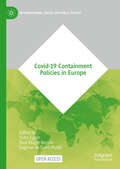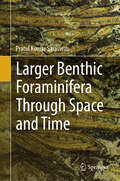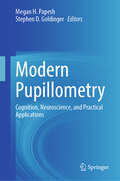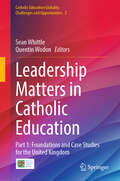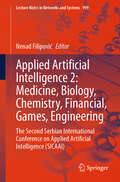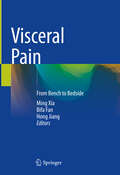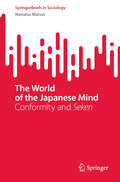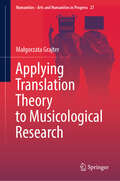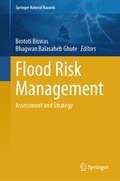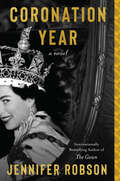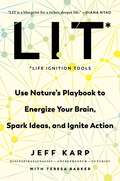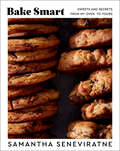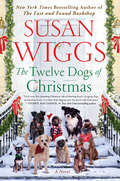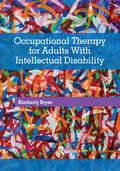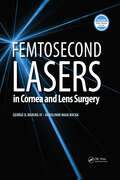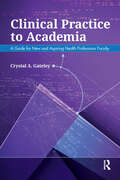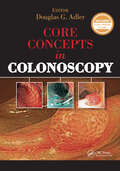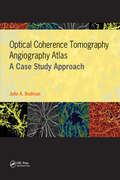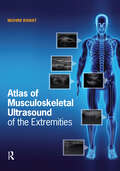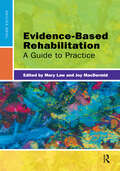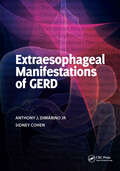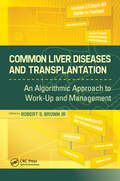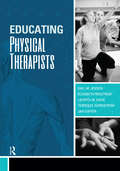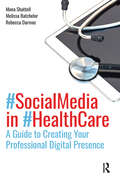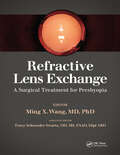- Table View
- List View
Covid-19 Containment Policies in Europe (International Series on Public Policy)
by Clara Egger Raul Magni-Berton Eugénie de Saint-PhalleThis open access book examines the diverse strategies implemented by national and local European governments to contain the Covid-19 pandemic. Rather than focus on individual national case studies, it brings together leading scholars and policymakers to analyse the wide range of containment policies utilised across the continent at various levels of government. In doing so, the volume assesses Covid-19 crisis-management experiences to identify good practices based on comparative and fine-grained evidence. It argues that such a stock-taking exercise is crucial to better prepare European polities and societies for future crises, including climate change and environmental disasters. The book will appeal to scholars and students of public policy, crisis-management, public administration, international relations and comparative law.
Larger Benthic Foraminifera Through Space and Time
by Pratul Kumar SaraswatiForaminifera are single-celled marine organisms, usually less than a millimeter in size, and their fossil records extend back in geological time some 500 million years. Some foraminifera have grown to over 10 centimeters; these are informally called "larger benthic Foraminifera" (LBF). LBF are of outstanding value in field and in laboratory experiments. They can serve as geochemical proxies and can be used to learn about biology, biomineralization process, and more. Their study finds wide-ranging geological applications, including the carbonate platforms' past environmental changes and stratigraphy. There are many books on micropaleontology, fewer on Foraminifera and practically none on LBF. The ones that do exist are generally too specialized for micropaleontology and carbonate sedimentology doctoral students to utilize. This volume aims to fill this gap by providing readers with an understanding of the morphology and distribution of LBF in space (environment) and time (evolution). In addition, the isotope and trace metal proxies in LBF are discussed for paleoclimate reconstruction. This volume will benefit researchers and professionals in micropaleontology, hydrocarbon exploration, carbonate sedimentology, and paleoclimate.
Modern Pupillometry: Cognition, Neuroscience, and Practical Applications
by Megan H. Papesh Stephen D. GoldingerPupillometry, the study of the eyes’ pupils, has a rich history, dating back to the 1800s. For example, to appear “dark with desire,” women once used atropa belladonna (deadly nightshade) as a cosmetic, because the atropine dilated their pupils, making them appear more romantically aroused. We now know that this relationship is largely driven by the activity of the sympathetic nervous system; specifically, a small brainstem nucleus known as the locus coeruleus (LC). Because of tight connections between the musculature of the eyes and LC, monitoring the pupils can reveal important insights into brain activity during mental processes. Many of these processes are related to attention and arousal (cognitive or emotional), with the LC controlling mental readiness via secretion of the neurotransmitter norepinephrine. While these complicated neurochemical processes happen in the brain, they are often overtly observable via pupil dilation. Although pupillometry was popular in the 1960s and 1970s, it fell out of favor until experiencing a renaissance approximately 10 years ago. With the advent of new eye-tracking and neural recording technology, measuring (and analyzing) pupil size is now easier than ever. Because all modern eye-trackers use pupil size in the calculation of gaze location, they also provide researchers with moment-by-moment pupil size measures in output files. Although previously considered “extra” data to support gaze location analyses, researchers have begun to conduct eye-tracking studies solely to gain access to pupil size data. These data have been used to study thought processes in many domains, including cognitive science, psychopathologies, business/marketing, security contexts, and the study of addiction. The diversity of interest in pupillometry is matched by the diversity in approaches taken to data collection, analysis, and interpretation. To date, there exists no book or tutorial review devoted specifically to ensuring that researchers carry out rigorous and reproducible work across these varied domains. Modern Pupillometry: Cognition, Neuroscience, and Practical Applications fills this gap by exploring the history, neuroscience, and methodological considerations of pupillometry research within and beyond psychology.
Leadership Matters in Catholic Education: Part 1: Foundations and Case Studies for the United Kingdom (Catholic Education Globally: Challenges and Opportunities #2)
by Quentin Wodon Sean WhittleThis edited collection is the first part of a two-volume set., which focuses on leadership in Catholic education settings in the United Kingdom. It includes an overview of the importance of different types of leadership, including ‘servant-leadership’, in understanding and framing Catholic school practice, a critical survey of why leadership matters to ensuring the success of Catholic education, and a discussion of what counts as the defining characteristics of leadership in Catholic education and how this relates to the aims or philosophy of Catholic education. The chapters in this book draw from the insights and experiences of serving Catholic school leaders as well as from academics and researchers in Catholic education studies. The final two chapters provide a comparative analysis for the United Kingdom in a global perspective using data from the Organisation for Economic Co-operation and Development (OECD) . Together, the chapters argue that there is an urgent need to find, nurture, and sustain outstanding leaders for Catholic schools and colleges.
Applied Artificial Intelligence 2: The Second Serbian International Conference on Applied Artificial Intelligence (SICAAI) (Lecture Notes in Networks and Systems #999)
by Nenad FilipovićThe book Applied Artificial Intelligence 2: Medicine, Biology, Chemistry, Financial, Games, Engineering is providing exceptional chapters of the state-of-the-art research knowledge and results on the innovative theories, methodology and applications of artificial intelligence and its sub-domain like deep learning, machine learning in different areas such as medicine, economy, education, law, smart city, government, industry etc. Innovative research ideas on how to solve problems using artificial intelligence, both in R&D and real-time applications are presented. Chapters describe the advanced prototypes, systems, methodologies, tools and techniques and general survey papers, which indicate future directions. These Chapters are extended papers from the Second Serbian International Conference on Applied Artificial Intelligence (SICAAI), which was held in Kragujevac, Serbia, on May 19-20, 2023
Visceral Pain: From Bench to Bedside
by Hong Jiang Ming Xia Bifa FanPatients with chronic visceral pain present a challenge for medical providers because of their vague presenting symptoms and frequent lack of identifiable pathology. Despite this, chronic visceral pain can be a debilitating medical condition that increases morbidity and decreases quality of life; the long-term consequences of which cause significant socioeconomic burden and debility. Covering the newest trends, studies, diagnosis and treatments in visceral pain care, as well as the pain treatment strategies that have been successfully employed in the past, this book brings readers fully up to date with effective recognitions and treatments for visceral pain. The clinical evaluation and presentation of common chronic visceral pain conditions and multimodal treatment options that can be used to assist patients and providers are focused.
The World of the Japanese Mind: Conformity and Seken (SpringerBriefs in Sociology)
by Noriatsu MatsuiThis book investigates the source from which the pressure to conform arises in Japanese society. Even though the contemporary Japanese word for “society” (Shakai) has a history of 140 years, it does not include the concept of respecting the individual but refers mainly to social frameworks and institutional aspects. At the same time, the traditional Japanese terms for “society”, primarily Seken, that have been in use for 1,400 years have embraced human relationships of the members of the group.The hypothesis of this book is that there is no “society” as such in Japanese people’s minds. By proposing a new model (the Hand-Carved Tripod Model) of conformity in Japan, the book shows the structure of the pressure to conform. The tripod is composed of ambiguous words, the sense of belonging, and the “air”, or understanding, that represents the unwritten rules and regulations of Seken.Conformity in Japanese people’s minds takesdifferent forms, from small residential groups to corporations at work, and to nationwide associations, but always dictates that people follow everyone else in the organization.This book examines the sense of being blocked in Japan that has prevailed over 30 years, during the period of the so-called Three Lost Decades in Japan. Examining phenomena such as low worker engagement, karoshi (death by overwork), high middle-age male suicide rates, bullying in school and at work, sex discrimination, hereditary membership in the Diet, and failure to provide adequate protection for whistle-blowers, this book reveals a common structure in Japanese minds: lack of respect for individuality, and the traditional and narrow sense of the world, i.e., Seken.This book will be beneficial to scholars and graduate students as well as to businesspeople who are interested in understanding the behavior and minds of Japanese people from the psychological,cultural, and historical viewpoints. It provides an integrated view of Japan’s Seken as the platform that generates their conformity.
Applying Translation Theory to Musicological Research (Numanities - Arts and Humanities in Progress #27)
by Małgorzata GrajterThis monograph lays the foundation for new methodologies of research between music and translation. It is the first such holistic attempt—from the perspective of a musicologist—based on the adaptation of translation theories. Until now, these fields have remained underexplored together. Only recently have the tools developed by translation theory permeated into musical scholarship. Such tools should prove as a promising alternative to those offered by classic musicological studies, particularly in reference to musical arrangement, pop music covers and performance. Theoretical discussion on topics are supported by case studies. This text appeals to musicologists and musicians as well as experts in the field of translation theory who are interested in expanding their field of inquiry.
Flood Risk Management: Assessment and Strategy (Springer Natural Hazards)
by Brototi Biswas Bhagwan Balasaheb GhuteThis book examines the nature of flood in different landscapes and the various factors that contribute to flooding in different areas. It identifies flood risk zones in different terrain types and provides valuable insights into the anthropogenic, geographical, hydro-geological, and geomorphological aspects of flood-prone areas to achieve sustainable risk management. The book also explores the impact of avalanches, global warming, and flash floods in different settings where such types of flooding have become more common. In addition, the volume provides case studies to evaluate the impact of flooding in both natural and man-made environments. To better understand and manage floods, the book combines advanced geospatial tools and techniques with indigenous knowledge. Using machine learning and multiple-criteria decision analysis, the book provides an amalgamation of technology and indigenous knowledge to assess flood susceptibility. The book also includes strategies to manage flood risks and case studies that demonstrate best practices in flood risk management. The volume is a valuable resource for researchers, students, and policy makers to understand the causes of floods and their socio-economic impact in different areas.
Coronation Year: A Novel
by Jennifer RobsonThe USA Today bestselling author of The Gown returns with another enthralling and royal historical novel— as the lives of three very different residents of London’s historic Blue Lion hotel converge in a potentially explosive climax on the day of Queen Elizabeth’s Coronation.It is Coronation Year, 1953, and a new queen is about to be crowned. The people of London are in a mood to celebrate, none more so than the residents of the Blue Lion hotel.Edie Howard, owner and operator of the floundering Blue Lion, has found the miracle she needs: on Coronation Day, Queen Elizabeth in her gold coach will pass by the hotel’s front door, allowing Edie to charge a fortune for rooms and, barring disaster, save her beloved home from financial ruin. Edie’s luck might just be turning, all thanks to a young queen about her own age. Stella Donati, a young Italian photographer and Holocaust survivor, has come to live at the Blue Lion while she takes up a coveted position at Picture Weekly magazine. London in celebration mode feels like a different world to her. As she learns the ins and outs of her new profession, Stella discovers a purpose and direction that honor her past and bring hope for her future.James Geddes, a war hero and gifted artist, has struggled to make his mark in a world that disdains his Indian ancestry. At the Blue Lion, though, he is made to feel welcome and worthy. Yet even as his friendship with Edie deepens, he begins to suspect that something is badly amiss at his new home.When anonymous threats focused on Coronation Day, the Blue Lion, and even the queen herself disrupt their mood of happy optimism, Edie and her friends must race to uncover the truth, save their home, and expose those who seek to erase the joy and promise of Coronation Year.
LIT: Use Nature's Playbook to Energize Your Brain, Spark Ideas, and Ignite Action
by Teresa Barker Jeff KarpSelected as a must-read by the curators of the Next Big Idea Book Club, including Daniel Pink, Susan Cain, Malcolm Gladwell, and Adam Grant“In this illuminating guide, Jeff Karp illustrates how we can break free from the routines that limit our thinking. LIT is an essential toolkit for converting intentions into actions that matter.” —Daniel H. Pink, #1 New York Times bestselling author“Don’t we all want to tap our innermost talents of creativity, the full power of our good brains?. . . LIT is a blueprint for a richer, deeper life." —Diana Nyad“Jeff Karp’s much-needed book provides a spark and helps us light ourselves up from within — while lighting up the world around us, bringing joy and creativity to all aspects of our lives.” —Arianna HuffingtonRadically simple experimental tools to help anyone tap into a high-energy brain state to fire up innovative potential and shape their lives with intention—by the founder of a Harvard biomedical engineering innovation lab.In an age of convenience and information overload, it’s easy to go through the motions, pressured, distracted, and seeking instant gratification rather than harnessing our potential for meaningful and impactful lives. In LIT, Jeff Karp, Ph.D., professor at Brigham and Women’s Hospital, Harvard Medical School, and biotech innovator, helps us look to nature as a vital source of humankind’s best wisdom, most inspired action, and greatest good. Diagnosed with learning differences at a young age, he persisted through nearly insurmountable struggles with support from his mom in developing ways to achieve hyper-awareness and maximize decisions based on his curiosity, passion, creativity, and connection to nature. He evolved these approaches into LIT (Life Ignition Tools) —and road-tested these tools daily in his own personal life and with his lab team to innovate medical discoveries inspired by the “problem solving” process they find throughout the natural world.LIT teaches us to:turn inward and connect with what is truly important to usturn outward to act on that, connecting with others and different ways of knowingquestion assumptions—break out of habitual thinking and other patterns to discover what really serves you bestexplore, experiment, and discover fresh approaches to old challengesDr. Karp also shares insights from some of the world’s most accomplished people, including Nobel Prize winners, the founder of an Indigenous wellness center, a visionary photographer, a social justice activist, a five-time US memory champion, an Olympic medalist, and a neurosurgeon who founded a center for compassion, as well as professors, inventors, entrepreneurs, CEOs, and members of his laboratory.Using Dr. Karp’s principles, anyone can redirect their lives with energy, focus, creativity, motivation, intention, and impact. Learning to be lit is the ultimate renewable energy and is accessible to everyone, anytime, wherever you are.
Bake Smart: Sweets and Secrets from My Oven to Yours
by Samantha SeneviratneNew York Time's "The Best Cookbooks of 2023" Bon Appetit's "The Best 23 Cookbooks: Fall 2023" Eater's “The 16 Best Cookbooks of Fall 2023”Tasting Table's "27 Cookbooks We're Looking Forward To In Fall 2023" NY Mag's "The Best Fall Cookbooks, According to Our Kitchen and Dining Writer" Simply Recipe's "These 12 New Cookbooks of Fall 2023 Make the Best Gifts"Oprah Daily's "The Best Cookbooks for Holiday Pie Inspiration"Critically acclaimed baking expert and media star Samantha Seneviratne dispels common baking myths and fears—and shares 100 of her favorite irresistible recipes.Star baker Samantha Seneviratne wants to tell you the baking secrets of industry pros: You can soften butter in a microwave in seconds, without melting it. Don’t bother sifting flour. No stand mixer? No problem—you can mix it by hand. Test the doneness of a cake without toothpicks (who actually has those?). Make a custard with a dump and stir method. Tempering schmempering.Break free from common baking myths, fears, and unnecessarily fussy procedures, with Bake Smart, filled with Sam’s tips and warm reassurances plus 100 stunning, mouth-watering recipes that are surprisingly achievable for any home baker. Chapters are organized by main baking ingredient (Butter; Sugar; Eggs; Flour, Nuts & Cocoa; and Yeast), each starting with a quick intro to break down the fundamentals of baking, as well as core recipes—like Basic Custard, Any-Nut Frangipane, and Rough Puff Pastry—that are easy to master and return to again and again.And each chapter includes recipes for delicious, modern-yet-timeless sweets:Stuffed S’more CookiesLemony Hibiscus DoodlesRaspberry Rye Balsamic TartBurnt Caramel Basque CheesecakeCaramelized Banana Cream Cornflake TartPassion Fruit and Pineapple Upside Down CakeGianduja RugelachMaple Tahini Chocolate Skillet CakeBig and Fluffy Lemon and Orange BunsChocolate Sesame Swirl BreadLinzer CookiesApricot Cardamom Buns
The Twelve Dogs of Christmas: A Novel
by Susan Wiggs"Don't miss this charming Christmas tale of thawing hearts, escaping dogs, and finding home. I couldn't help digging into this book with both paws." --Debbie Macomber, #1 New York Times bestselling author of Must Love FlowersThe ultimate holiday gift from New York Times bestselling author Susan Wiggs: a delightful novel about a Christmas transport of rescue puppies that’s guaranteed to warm readers’ hearts.Brenda Malloy wants nothing to do with Christmas ever again. Last year, Brenda and her husband rushed their beloved dog Tim to the emergency vet on Christmas eve. The good news: Tim survived after the vet cleared the obstruction--a pair of women’s lace undies. The bad news: the undies were not Brenda’s.A year after the breakup, Brenda has put her life back together. She’s trained for a marathon, is writing a children’s novel, and she’s found purpose and healing as a volunteer with a dog rescue organization in Houston, Texas. The rescue partners with a program in Avalon, New York--a small, snowy town deep in the Catskills. Now Brenda is arranging the transport of rescued dogs from Houston to Avalon—just in time for a merry Christmas with their forever families. Brenda’s friends worry about her driving a van two thousand miles with twelve dogs in crates, but she shrugs off their concern. How hard can it be? She knows the way, and she’s just looking to escape the Christmas overload for a while. But a blinding snowstorm, an escaped mutt, and a life-saving encounter with Adam Bellamy—a single dad and paramedic—means Brenda has to stay in Avalon longer than she planned. As she drops off each precious pup at their new homes, some of the comfort and joy of the season begins to creep up on Brenda despite her determination to avoid the holidays. Perhaps you can bring Christmas into your heart after all...if you have the right furry friends to guide the way.
Occupational Therapy for Adults With Intellectual Disability
by Kimberly BryzeOccupational Therapy for Adults With Intellectual Disability provides occupational therapy practitioners and students with occupation-based solutions to serve and empower individuals with intellectual disabilities, as well as their families and caregivers, towards more self-determined, authentic lives.There are few texts that exist within occupational therapy that support this population. Dr. Kimberly Bryze and the contributing authors are all occupational therapists who have or currently provide occupational therapy services to adults with intellectual disability in various settings. They bring their expertise in scholarship and offer thoughtful, evidence-based approaches for practitioners to create change for individuals, communities, organizations, and society.This text presents an occupational perspective of individuals with intellectual disability given its focus on the following: quality of living social well-being role competence occupational identity self-advocacy occupational justice Occupational Therapy for Adults with Intellectual Disability is ideal for occupational therapy educators who teach content related to adults with intellectual and developmental disabilities, occupational therapy practitioners who provide services to adults with intellectual disability in various clinical, community, and residential settings, and occupational therapy students. Included with the text are online supplemental materials for faculty use in the classroom.The intentional, occupational focus ensures that the content is consistent with recommended practice in current occupational therapy. Occupational therapy practitioners will look to this text to provide evidence-based interventions and when developing consultative programs for persons with intellectual disability across many different settings.
Femtosecond Lasers in Cornea and Lens Surgery
by George Waring Karolinne RochaFor ophthalmologists who are already using femtosecond lasers as well as those just starting out who are looking for the definitive reference manual, Femtosecond Lasers in Cornea and Lens Surgery is a comprehensive, cutting-edge guide to this technology that features a robust supplemental website with nearly 40 surgical videos. With the advent of small incision lenticule extraction, pockets and channels for corneal inlays and ring segments, femtosecond lasers for corneal surgery have advanced significantly over the past several decades, and ophthalmologists are looking for expert guidance on their acquisition, utilization, and optimization. With contributions from world-renowned surgeons who have seen the benefit of integrating femtosecond laser technology into their practices, this text reviews the practical aspects of femtosecond technology and also addresses the future of this quickly evolving space. Drs. George O. Waring, IV and Karolinne Maia Rocha lead their team of more than 50 expert contributors in providing a thorough, definitive text summarizing all aspects of femtosecond lasers for corneal and lens surgery in a balanced and commercially unbiased manner. All of the major platforms and systems are covered in chapters including: Integration of Femtosecond Laser–Assisted Cataract Surgery Into Your Practice Therapeutic Laser Assisted Cataract Surgery Complications of Femtosecond LASIK Small Incision Lenticule Extraction Femtosecond Laser Pockets for Corneal Inlays Use of Femtosecond Lasers in Keratoplasty For a comprehensive resource on the use of femtosecond lasers in cornea and lens surgery, as well as unbiased opinions from expert contributors on the various procedures and platforms, Femtosecond Lasers in Cornea and Lens Surgery is a must-have for ophthalmologists wishing to stay on top of this evolving field.
Clinical Practice to Academia: A Guide for New and Aspiring Health Professions Faculty
by Crystal GateleyDesigned to assist health professionals with the transition from a clinical role to a faculty role, Clinical Practice to Academia: A Guide for New and Aspiring Health Professions Faculty provides a comprehensive overview of higher education for new and aspiring faculty across health professions including occupational therapy, physical therapy, athletic training, nursing, speech-language pathology, clinical and diagnostic sciences, and pharmacy. This practical guide explores the complexities of the faculty role and includes specific strategies related to teaching and learning in the health professions. Written by Dr. Crystal A. Gateley, Clinical Practice to Academia includes an overview of the issues most impacting academics today. Chapters are placed within the context of current health care and higher education settings. Conceptual foundations of teaching and learning are reviewed, and specific strategies for classroom instruction are provided. The text also includes suggestions for ongoing professional development through the first few years and beyond. Unique aspects of Clinical Practice to Academia include: Introduction to institutional differences that affect faculty roles Focus on the first few years of an academic career Recommendations for exploring campus and professional resources Overview of today’s college students Self-directed learning activities in each chapter for further exploration of topics With practical advice that can be tailored to unique faculty roles, Clinical Practice to Academia: A Guide for New and Aspiring Health Professions Faculty is a must-have for any health care professionals who are moving into academia.
Core Concepts in Colonoscopy
by Douglas AdlerCore Concepts in Colonoscopy covers all aspects of diagnostic and therapeutic colonoscopy, emphasizing overarching concepts that gastroenterology fellows and physicians must know to achieve success in both the technical and cognitive aspects of the procedure. In this comprehensive resource, Dr. Douglas G. Adler and his contributors provides a straightforward and practical review of colonoscopy.Core Concepts in Colonoscopy aims to address and convey the core concepts of colonoscopy: from the structure and function of the colonoscope itself, to insertion techniques, loop formation and reduction, polypectomy techniques for any situation, the avoidance and management of perforations and other adverse events, as well as advanced techniques including (but not limited to) endoscopic mucosal resection and colonic stenting.Each chapter inside Core Concepts in Colonoscopy is lavishly illustrated with multiple key images to accentuate and enhance the written text, as well as a plethora of tips, tricks, and accumulated points of wisdom in each chapter on all facets of colonoscopy.Additional Website Component!Core Concepts in Colonoscopy is accompanied by a video website with specific videos connected to individual chapters that will illustrate basic and advanced colonoscopic techniques from many leading experts and will further enhance the learning process. The addition of the video website allows for a more robust learning experience and allows the reader to watch, listen, view repeatedly, and reinforces the techniques presented in the written text.GI fellows, junior gastroenterologists, and even advanced physicians will appreciate Core Concepts in Colonoscopy because of the user-friendly and efficient structure that allows for the material to be quickly read, as well as easily absorb the wealth of key practical knowledge found inside.
Optical Coherence Tomography Angiography Atlas: A Case Study Approach
by Julie Rodman Dan EsmailiOptical Coherence Tomography Angiography (OCTA) is a novel, non-invasive, dyeless imaging modality that has emerged as an indispensable tool in the fields of optometry and ophthalmology. OCTA provides three-dimensional volumetric images of the retinal and choroidal vasculature by using a motion-contrast decorrelation algorithm. This cutting-edge imaging technology has widespread clinical utility as a non-invasive alternative for visualizing microvasculature in detail, but there are no textbooks dedicated to its use and the interpretation of scans. To fill this need, Optical Coherence Tomography Angiography Atlas: A Case Study Approach, by Dr. Julie A. Rodman, is a richly illustrated, practical guide to OCTA. It provides detailed information on the fundamental principles behind the technology, as well as clinical applications critical for accurate interpretation. The first section of the book discusses the principles behind OCTA and provides an introduction into the interpretation of OCTA images, including a chapter devoted to terminology. The remainder of the book provides detailed analysis of a myriad of inner and outer retinal disorders, including diseases of the optic nerve head. Most importantly for the clinical setting, the cases are presented with numerous images and a multitude of arrows and callouts to assist in the recognition of various clinical findings.Case examples include: Vascular Occlusive Disease Pigment Epithelial Detachment Choroidal Neovascular Membrane Diabetic Retinopathy Optic Disc Edema Dr. Rodman’s emphasis on the clinical use of OCTA technology and step-by-step interpretation of images makes Optical Coherence Tomography Angiography Atlas: A Case Study Approach a must-have resource for physicians, residents, students, and ophthalmic technicians looking for a simple, comprehensive guide to OCTA.
Atlas of Musculoskeletal Ultrasound of the Extremities
by Mohini RawatFeaturing nearly 700 illustrations, images, and photos, Atlas of Musculoskeletal Ultrasound of the Extremities by Dr. Mohini Rawat is a comprehensive visual guide to musculoskeletal ultrasound imaging for health care students and clinicians. Musculoskeletal ultrasound imaging is a new, rapidly growing field with applications across many health care disciplines. With its increased popularity comes a need for detailed training resources. The Atlas of Musculoskeletal Ultrasound of the Extremities presents information on scanning protocols for the joint regions and peripheral nerves of the upper and lower extremities in an easy-to-follow, highly visual format. Beginning with an overview of ultrasound physics, equipment, terminology, and technique, the book provides detailed instruction for musculoskeletal ultrasound of the shoulder, elbow, wrist, hip, knee, ankle and foot, concluding with a comprehensive chapter on peripheral nerves. Each chapter contains detailed images of scanning protocols, anatomy, sonoanatomy, patient positioning, and probe positioning for each joint region. Images are accompanied by explanatory text descriptions, along with clinical pearls under points to remember. Designed for students and clinicians in physical therapy, occupational therapy, athletic training, orthopedics, rheumatology, physiatry and podiatry, the Atlas of Musculoskeletal Ultrasound of the Extremities provides essential introductory training materials and serves as a helpful reference for busy clinical environments.
Evidence-Based Rehabilitation: A Guide to Practice
by Mary Law Joy MacDermidWhile evidence-based practice (EBP) has greatly influenced rehabilitation in the past decade, it continues to evolve and practitioners need guidance to implement evidence into their practice. Evidence-Based Rehabilitation: A Guide to Practice, the best-selling text providing step-by-step EBP guidance for rehabilitation professionals, has been updated into an expanded Third Edition.In Evidence-Based Rehabilitation, Third Edition Drs. Mary Law and Joy MacDermid, along with their contributors, explain evidence-based rehabilitation, the concepts underlying EBP, and build the reader’s knowledge and skills through specific learning. The text is organized by the steps of the EBP process—introduction to EBP, finding the evidence, assessing the evidence, and using the evidence.EBP focuses first and foremost on making the best decisions for each client and using the best information available. For many rehabilitation practitioners, building skills in EBP is best done one step at a time. Evidence-Based Rehabilitation helps the rehabilitation student and practitioner develop his or her knowledge and skills to implement evidence-based rehabilitation in practice. Benefits of the Third Edition:• All chapters have been updated with new information and resources• New chapters about systematic reviews, and knowledge transfer• Extensive guide available with specific student activities and answers for faculty use• Critical review forms included for student use—these forms have been used by practitioners and researchers around the world for 10 to 20 years• Recognition throughout the book that EBP in rehabilitation means bringing together research evidence, clinical reasoning of the therapist and client values and goals• Fits the standard 3-unit course design with 11 to 12 sessionsIncluded with the text are online supplemental materials for faculty use in the classroom.Designed and written by an occupational therapist and a physical therapist with extensive research, education, and practice experience, Evidence-Based Rehabilitation: A Guide to Practice, Third Edition will guide both occupational therapy and physical therapy students and practitioners as they incorporate evidence-based practice into their work.
Extraesophageal Manifestations of GERD
by Sidney Cohen Anthony J. DiMarino, Jr.In the past 30 years, gastroesophageal and reflux disease (GERD) has become an important area of clinical medicine. GERD has gradually become associated with other common but unexplained disorders. These conditions have been designated as the extraesophageal manifestations of GERD.Dr. Anthony J. DiMarino, Jr. and Dr. Sidney Cohen and their contributors have written Extraesophageal Manifestations of GERD with the purpose to identify associations with conditions like hoarseness, laryngeal cancer, sleep disorders, and dental caries, and to explore possible causation and mechanisms of disease or possible noncausal relationships. The extraesophageal disorders have become widely accepted in clinical practice. The evidence supporting the pathogenesis of these conditions falls into three major categories: guilt by association, observed mechanistic studies, and therapeutic response to treatment.Inside the pages of Extraesophageal Manifestations of GERD the reader will find recognition and balance in treating patients with common symptom-based disorders. Final resolution of some of the controversies inherent in these associations may require advanced diagnostic tools and advanced pharmacological therapies.With chapters written by experts in the fields of medicine, pediatrics, otolaryngology, and dentistry, Extraesophageal Manifestations of GERD will be a must have for gastroenterologists, internal medicine residents, surgeons, otolaryngologists, and pediatricians.
Common Liver Diseases and Transplantation: An Algorithmic Approach to Work Up and Management
by Robert BrownCommon Liver Diseases and Transplantation: An Algorithmic Approach to Work Up and Management provides a review of liver diseases and transplantation that is comprehensive enough to provide an intellectual basis for the data, yet simple enough to be read and assimilate into clinical practice rapidly. Common Liver Diseases and Transplantation by Dr. Robert S. Brown Jr is written with an intended flow and structure. The early chapters are summaries on topics such as early and late liver disease, workup and diagnosis, and pre- and post-transplant problems. The chapters that follow are liver disease-specific and cover the liver diseases physicians will encounter in their patients. The in-depth chapters provide disease-specific epidemiology and outcomes, as well as diagnostic tables and more detailed algorithms and management approaches. With two decades worth of teaching liver disease both formally as well as in rounds and informal “chalk talks” with residents and fellows, Dr. Robert S. Brown Jr presents a way to think about clinical liver problems with a simple algorithmic method.Common Liver Diseases and Transplantation: An Algorithmic Approach to Work Up and Management will serve as a useful resource for gastroenterologists, fellows, medical students, internists, and internal medicine residents.
Educating Physical Therapists
by Gail JensenThe Preparation for the Professions Program by the Carnegie Foundation for the Advancement of Teaching focused on education in five professions (clergy, law, engineering, nursing, and medicine), but its influence has been felt throughout higher education and has inspired other professions to turn a critical eye to their own pedagogy. Modeled after the Carnegie Foundation’s example, Drs. Gail Jensen, Elizabeth Mostrom, Laurita Hack, Terrence Nordstrom, and Jan Gwyer began an examination of the state of physical therapist education in the United States in their study, Physical Therapist Education for the Twenty First Century (PTE-21): Innovation and Excellence in Physical Therapist Academic and Clinical Education. With the same team of authors, Educating Physical Therapists documents this examination, detailing the key findings of the study and expanding on its implications. The text begins by looking at the current state of physical therapist education across the continuum, from professional education through residency, then continues by describing exemplars of excellence and best practices that were observed in academic and clinical settings. Through this survey of the profession, a conceptual model of excellence in physical therapist education is derived and presented with practical recommendations.Areas addressed: Elements that promote a culture of excellence Critical needs for advancing learning and the learning sciences Academic and clinical organizational imperatives The critical need for system-based reform Finally, after looking at the current state of physical therapy education, Educating Physical Therapists looks to the future, providing a reimagined vision for what professional education and the profession could be. These recommendations for growth come with commentary by international experts in physical therapy education, providing a wide range of perspectives. After an intensive examination of physical therapist education, Educating Physical Therapists is designed to change the way educators and administrators across academic and clinical settings prepare physical therapists for the future.From the Foreword… “The authors of this volume have much to teach us, and they have taught us well. We can accept their recommendations, or we can argue with them. To ignore them is impossible.” -Lee S. Shulman, PhD, President Emeritus, The Carnegie Foundation for the Advancement of Teaching
Social Media in Health Care: A Guide to Creating Your Professional Digital Presence
by Mona Shattell Melissa Batchelor Rebecca DarmocA practical, essential guide to social media for health care professionals, Social Media in Health Care equips readers with the skills to build their online brand, share their professional knowledge with a wider audience, and become a trusted source of information and thought leader in their field.Authors Mona Shattell, Melissa Batchelor, and Rebecca Darmoc explain the principles behind building a respected digital presence and developing meaningful online connections, while providing practical tips for navigating the five major social media platforms: Twitter, LinkedIn, Facebook, Instagram, and YouTube. Everyone from health care students to the most seasoned professionals will benefit from the 3C’s Framework outlined in the book: Consume, Contribute, and Create.Social Media in Health Care can be read cover to cover or used as quick reference guide. Topics include: Exercises for novice, intermediate, and advanced users Best practices for consuming, sharing, and creating content Tips for readers to build their social media presence and professional brand Recommendations for using digital platforms to expand professional networks Patient privacy concerns and how to avoid ethical pitfalls Social media can start conversations and serve as an open line of communication between peers, the public, and patients. Social Media in Health Care guides members of the medical community in how to use social media to help educate the public and specific patient communities about health care and health policy, make connections with industry leaders and peers, and enhance their professional reputation.
Refractive Lens Exchange: A Surgical Treatment for Presbyopia
by Ming WangPermanent surgical treatment for presbyopia remains the hereto unconquered “last frontier” in anterior segment surgery. Over the years, continuing innovations like Phaco, Radial Keratotomy, LASIK, and premium intraocular lenses have pushed toward this ultimate goal, but now anterior segment surgery is closer than ever with the advent of modern laser-assisted presbyopic lens implantation. Let Refractive Lens Exchange: A Surgical Treatment for Presbyopia, the first book of its kind, be your guide to this fifth wave of innovation in the surgical treatment of presbyopia. Dr. Ming X. Wang, MD, PhD, joined by Associate Editor Dr. Tracy S. Swartz, OD, MS, FAAO and more than 30 expert contributors, compiled this remarkable book. Never before has there been a book dedicated to all aspects of refractive lens exchange as a permanent treatment for presbyopia, both medically and surgically. Highlights of Refractive Lens Exchange include: Overview of all surgical treatments for presbyopia Dysfunctional lens syndrome and pathophysiology Patient education and preoperative assessment Marketing refractive lens exchange as a surgical treatment for presbyopia New technologies in assessing dysfunctional lens syndrome New technologies in mapping cornea and lens for refractive lens exchange Retinal issues related to refractive lens exchange Presbyopic lens types, indications, and contraindications for refractive lens exchange Lens- and cornea-based astigmatism correction Intraocular calculations for post refractive surgery eyes for refractive lens exchange Intraoperative wavefront technology 3D high-definition microsurgical visualization and positioning technology Femtosecond laser application in refractive lens exchange Postoperative care and complication management YAG capsulotomy after refractive lens exchange: indications and alternatives Postoperative care and complication management Keratorefractive enhancement Designed for newcomers as well as seasoned eyecare professionals, Refractive Lens Exchange: A Surgical Treatment for Presbyopia is the first book to guide ophthalmic surgeons, optometrists, and technicians through this exciting new field that is emerging as a safe and effective primary surgical treatment for presbyopia.
